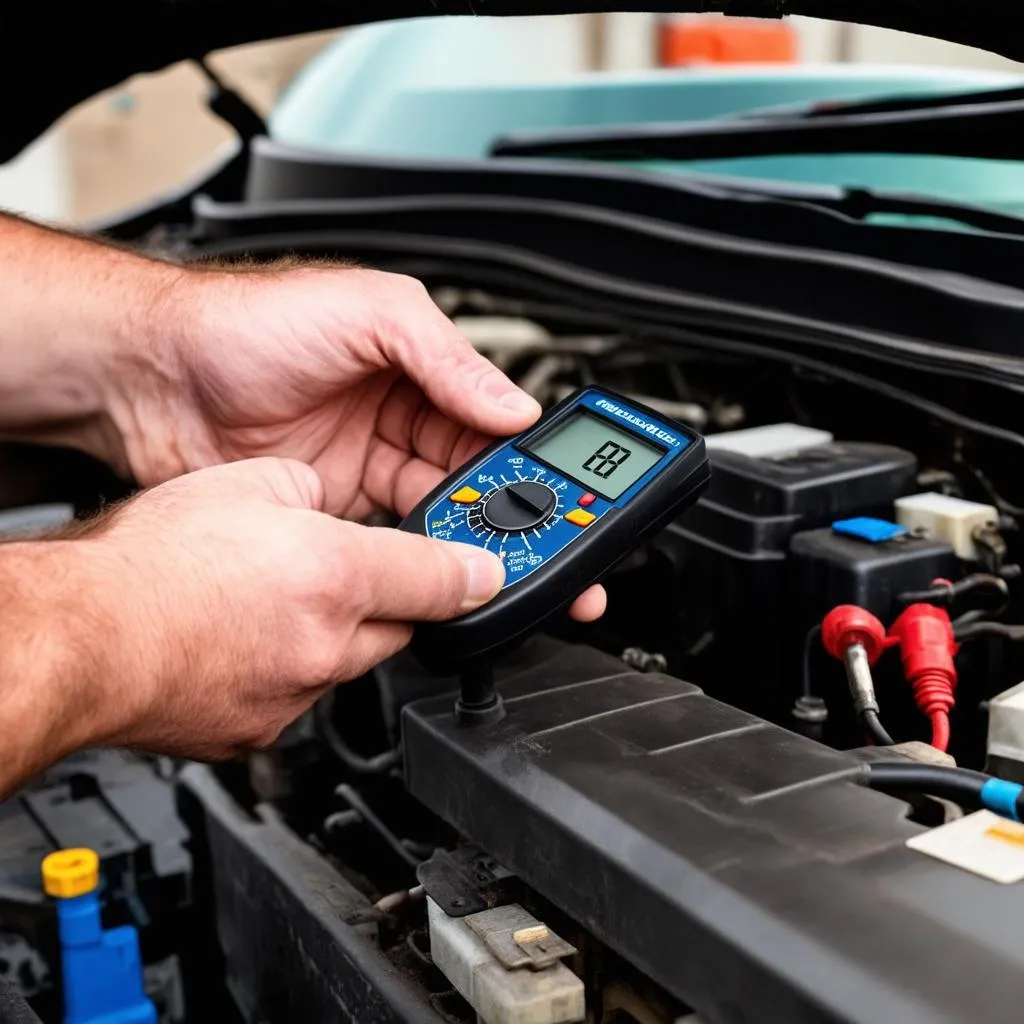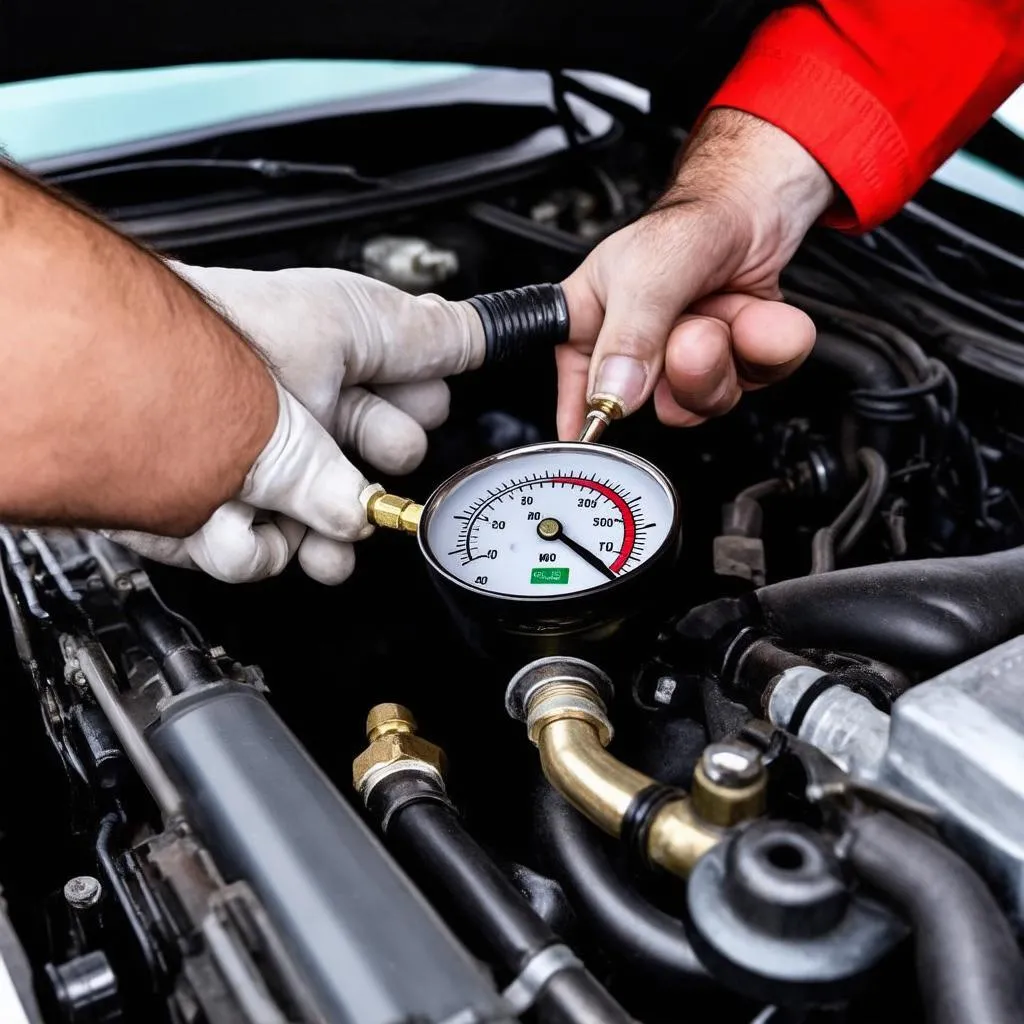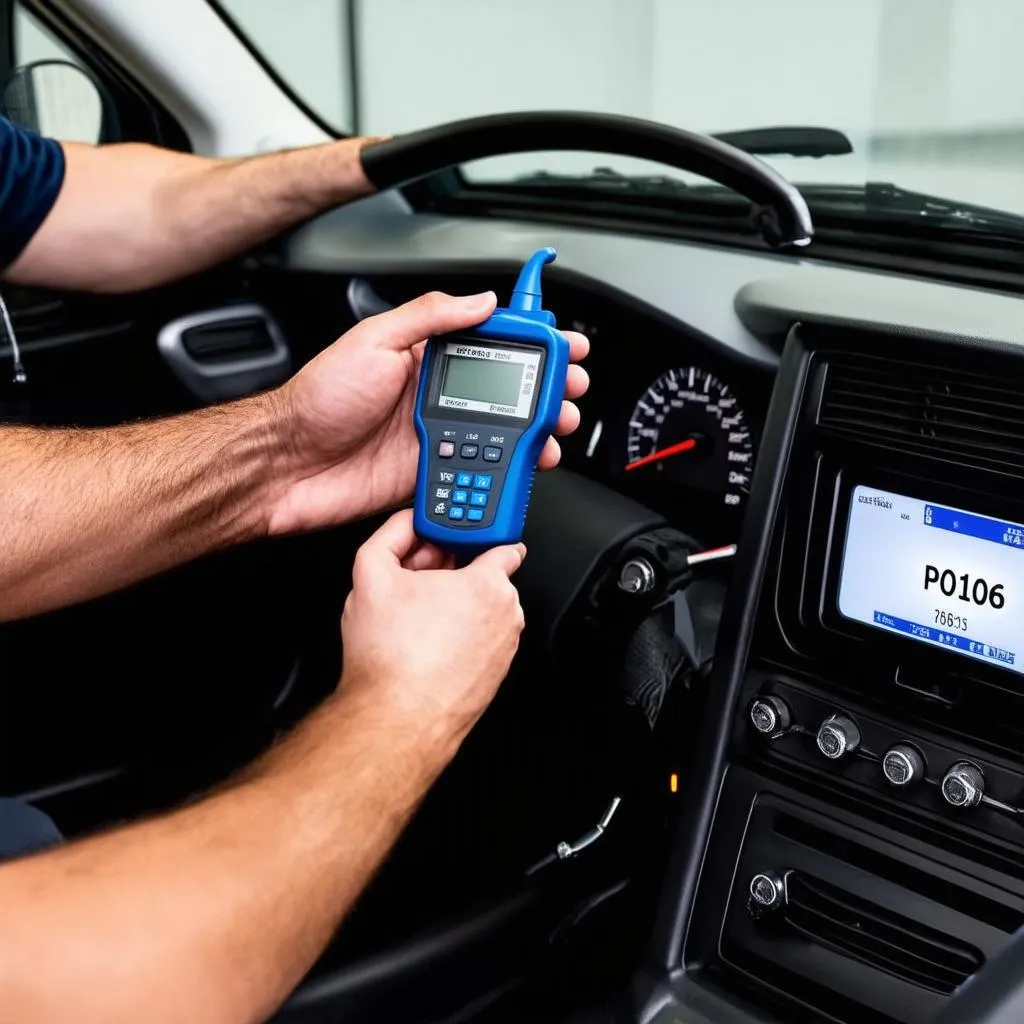Have you ever heard that nagging sound of your car engine, like a whisper of discontent? Maybe it’s sputtering, losing power, or just not running smoothly. Then you check the dashboard and see that dreaded “check engine” light glowing ominously. And when you connect your OBD-II scanner, the code pops up: P0106.
What does it mean? And how can you fix it? Let’s delve into the world of P0106, unravel its mystery, and empower you to tackle this automotive enigma.
Understanding the P0106 Obd Code
P0106, in the language of car diagnostics, translates to “Manifold Absolute Pressure (MAP) Sensor Circuit Range/Performance Problem“. The MAP sensor is a crucial component in your engine’s control system. It measures the air pressure inside the intake manifold, a key factor in determining how much fuel to inject for optimal engine performance.
Think of it like this: your engine is a hungry beast, and the MAP sensor is its appetite regulator. It tells the engine’s brain (the ECU) how much air is being sucked in, allowing the ECU to deliver the precise amount of fuel to keep the engine running smoothly.
What Causes P0106 Obd Code?
Now, the P0106 code is a symptom of a problem, not the problem itself. It points to an issue with the MAP sensor or its circuitry. Here are some common culprits:
1. Faulty MAP Sensor:
- The MAP sensor itself might be faulty. It’s a delicate sensor, vulnerable to wear and tear, dirt, or damage from heat. Think of it like an overworked barista – too much caffeine, too much stress, and it starts to malfunction!
2. Vacuum Leaks:
- A vacuum leak can disrupt the air pressure readings, triggering the P0106 code. Imagine a leaky coffee cup – the precious brew (air) escapes, leaving the cup (intake manifold) with less pressure.
3. Electrical Issues:
- Faulty wiring, a bad connector, or even a corroded terminal can disrupt the communication between the MAP sensor and the ECU. It’s like a broken phone line – the signal can’t get through, leading to communication breakdown.
How to Fix P0106 Obd Code
Fixing P0106 requires a systematic approach. Here’s a breakdown:
1. Inspect the MAP Sensor:
- Start by visually inspecting the MAP sensor for any signs of damage, corrosion, or dirt. A simple cleaning might be all it needs to revive the sensor.
2. Check for Vacuum Leaks:
- Use a vacuum gauge to test for leaks in the intake manifold, hoses, and related components. A hissing sound or a significant drop in pressure indicates a leak.
3. Inspect Wiring and Connectors:
- Check the wiring and connectors for any breaks, loose connections, or corrosion. Tighten loose connections, repair damaged wires, and clean corroded terminals.
4. Replace the MAP Sensor:
- If the problem persists, replacing the MAP sensor is often the solution. Ensure you choose a compatible sensor for your vehicle.
5. Consult a Mechanic:
- If you’re not comfortable tackling the diagnostics and repairs yourself, it’s best to consult a mechanic who has the expertise and specialized tools.
Tips for Preventing P0106 Obd Code
- Regular Maintenance: Routine engine maintenance helps prevent many issues, including vacuum leaks. Keep your engine tuned up and replace worn-out hoses and components.
- Clean Air Filter: A dirty air filter can restrict airflow and disrupt pressure readings. Replace it regularly.
- Avoid Harsh Conditions: Excessive heat or harsh conditions can damage the MAP sensor. Be mindful of extreme temperatures and protect your engine from dust and dirt.
Frequently Asked Questions:
1. Can I drive with a P0106 code?
- It’s generally okay to drive a short distance with a P0106 code, but don’t ignore it. Driving with a faulty MAP sensor can lead to reduced fuel efficiency, rough idling, and even engine damage.
2. Can I reset the code myself?
- You can reset the code using an OBD-II scanner, but it won’t fix the underlying issue. The code will reappear if the problem persists.
3. How much does it cost to fix P0106?
- The cost of fixing P0106 can vary depending on the cause and the type of vehicle. A new MAP sensor can range from $20 to $100, while labor costs can be an additional $50-$150.
4. Are there any DIY solutions for P0106?
- While you can try cleaning the MAP sensor or checking for leaks yourself, if you’re not comfortable with auto repairs, it’s best to leave it to a professional.
Other OBD Codes Related to MAP Sensor:
- P0107 MAP Sensor Circuit Low Input
- P0108 MAP Sensor Circuit High Input
- P0109 MAP Sensor Circuit Intermittent
Vehicles Affected by P0106 Code:
The P0106 code can occur in various vehicles, but it’s frequently seen in European cars, especially those with turbocharged engines. Some common affected makes include:
- Volkswagen
- Audi
- BMW
- Mercedes-Benz
Additional Resources for P0106 Obd Code:
Need Help with Automotive Diagnostics?
If you’re facing a P0106 code or any other automotive diagnostic challenges, don’t hesitate to contact us. Our team of experts is available 24/7 to assist you with diagnostics, repair, and guidance. Contact us via WhatsApp: +84767531508
Conclusion:
The P0106 Obd Code is a common issue that can be addressed with proper diagnostics and repairs. Understanding the cause and the solutions empowers you to take control of your car’s health. Remember, regular maintenance and a proactive approach are key to preventing future issues.
Share your experiences with P0106 in the comments below, and let us know if you have any questions!
 MAP Sensor Inspection
MAP Sensor Inspection
 Vacuum Leak Check
Vacuum Leak Check
 OBD Scanner Reading
OBD Scanner Reading